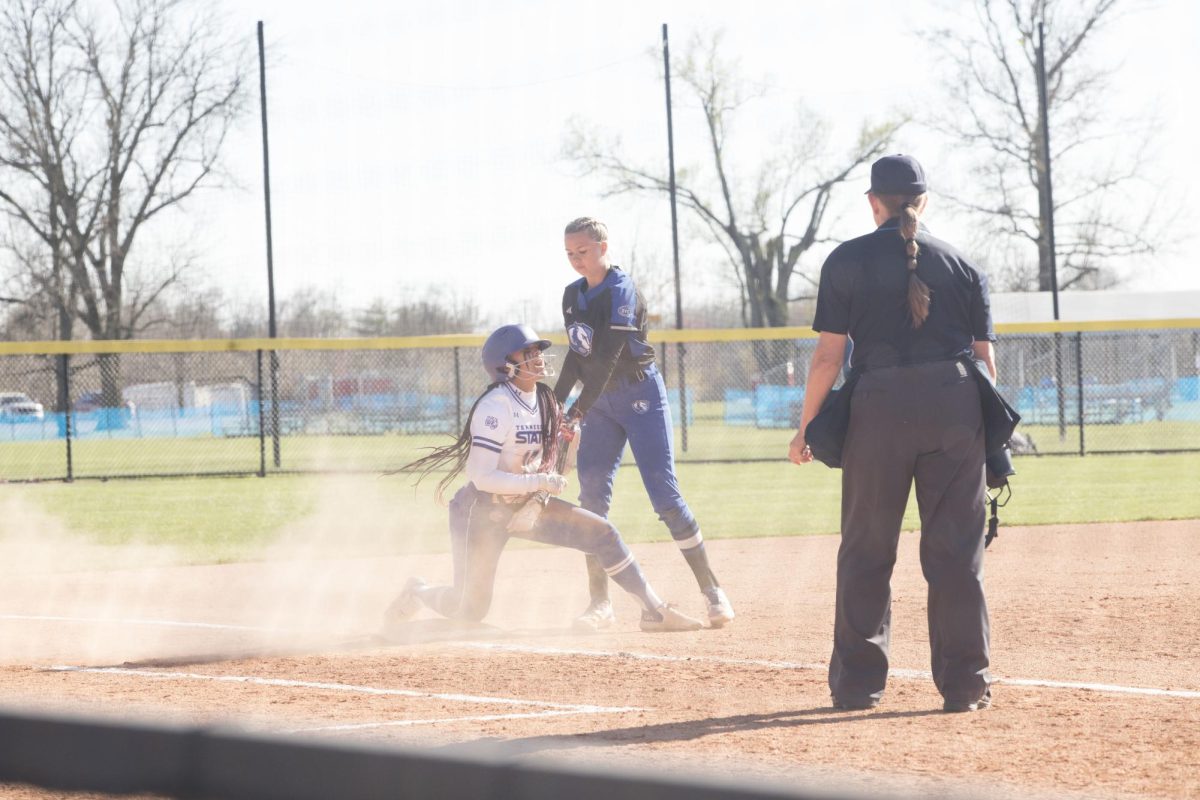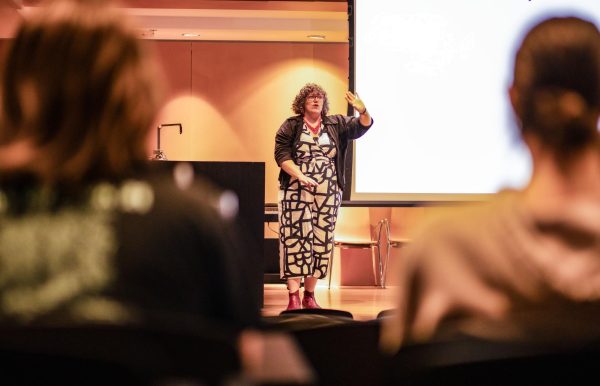Students learn about “struggle” in Midwest
With a focus on St. Louis, Clarence Lange, a guest speaker, compared African American discrimination in the Midwest to the South during the Civil Rights Movement at “Writing the Black Freedom Struggle in the Midwest.”
Lang, an assistant professor of African American Studies at University of Illinois Champaign-Urbana, presented the lecture Thursday night in the Doudna Fine Arts Center’s Lecture Hall.
Lang cited an instance on Aug. 27, 1963, when members of the Congress of Racial Equality picketed outside the St. Louis mayor’s office demanding fair employment practices for African Americans at the Jefferson Bank of Missouri.
“Although it is located geographically in the Midwest, St. Louis embodied the political, social and cultural patterns of the so-called border states,” Lang said.
Lang said the CORE demonstration, along with several similar episodes in the St. Louis area, sparked a series of events that came to define the Civil Rights Movement in the Midwest.
“Later, 84 African American employees were hired at the bank and 14 other financial institutions,” Lang said. “Executives at several other companies, fearful that protests would come their way next, began making reforms.”
Tim Engles, an English professor, said many people tend to generalize about what was really going on during the Civil Rights Movement and what African Americans were thinking during that time period.
In the presentation, Lang said libraries were not segregated in St. Louis, but swimming pools, churches, ballparks, theaters and restaurants were.
He also said Missouri’s constitution segregated public schools and prohibited interracial marriage.
Lang pointed out that as CORE took on a more diverse membership, including blacks and whites both young and old, the Civil Rights Movement gained momentum and began to gain widespread recognition.
“The people pushing for change during the Civil Rights Movement were much more diverse than we realize,” Engles said.
Lang noted many issues, such as employment, political representation and relationships with law enforcement, still exist, but remarkable progress has been made since the beginning of the movement.
Lang said the documentary series, “Eyes on the Prize,” which explains the Civil Rights Movement from 1955 until the 1980s, influenced him when he was 14 years old to study the movement.
After moving to St. Louis, Lang said he became interested in the movement’s role there.
“St. Louis is emblematic of black struggles across the Midwest,” Lang said. “It illustrates an in-between character and pushes us toward the need to expand the history of the Civil Rights Movement above the Mason-Dixon line.”
Lang said learning about the incidents that occurred in St. Louis will help people to realize their own ability to make change.
“We should think of the ways we all as individuals can play a role in our communities today, no matter how small that role might be,” Lang said.
Nick Livers can be reached at 581-7942 or [email protected].










































